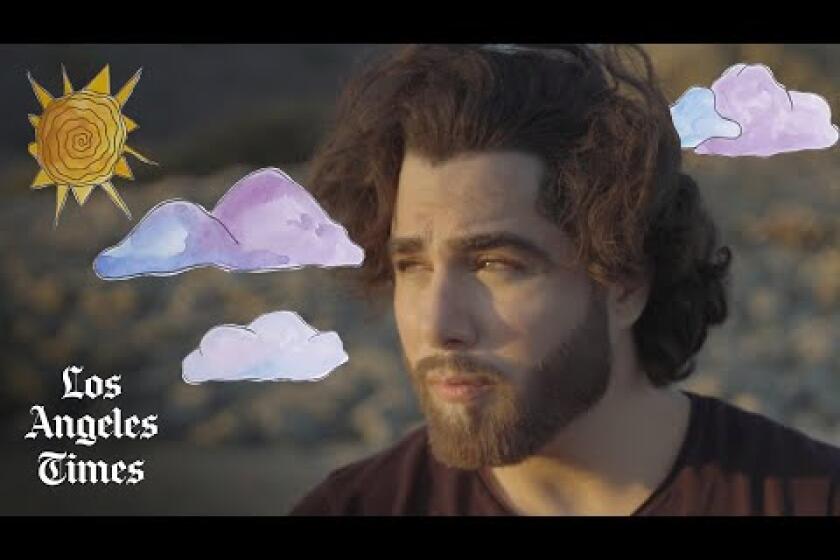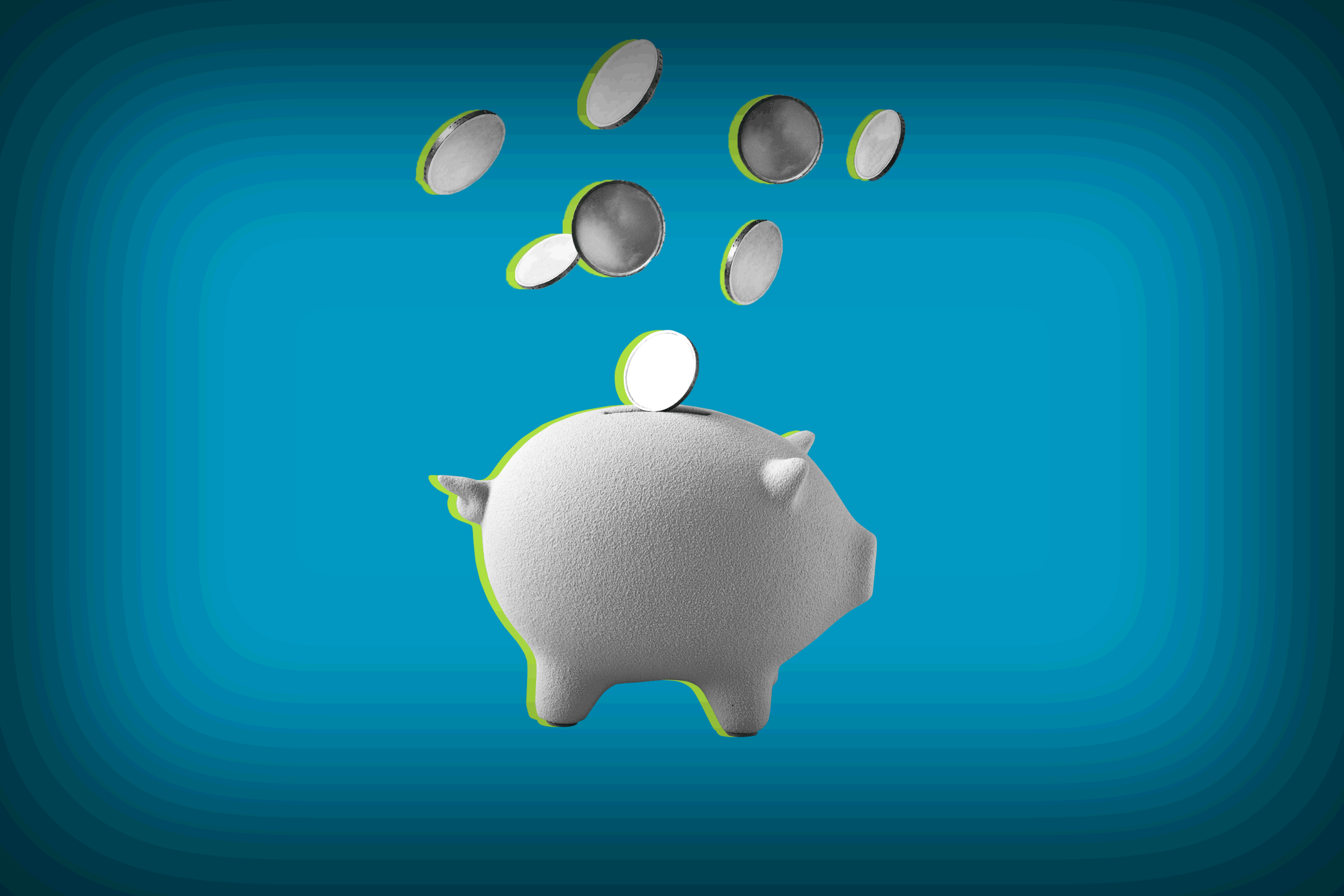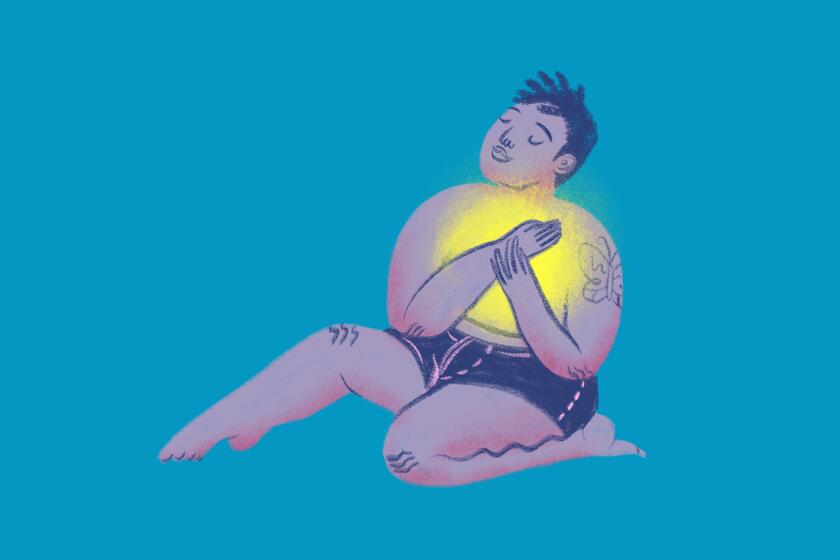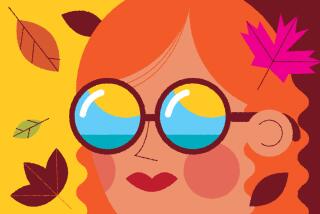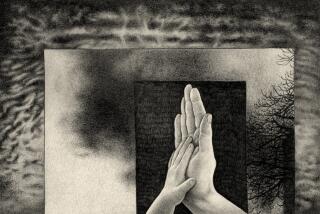How to stay sane when it gets dark outside at 5 p.m.

Youâve scarcely finished your Halloween candy and pan de muerto and are just starting to contemplate this yearâs holiday decor. Unfortunately, the grimmest of all annual holidays is upon us: the end of daylight saving time.
Welcome back to the darkest timeline.
At 2 a.m. Sunday, the clocks roll back an hour and the bleak winter days descend. Farewell, post-6 p.m. sunsets. Hello, feeling like itâs 10 p.m. by the time you sit down for dinner.
It shouldnât have to be this way. And in California, we voted for it to not be: In 2018, 60% of voters said yes to a proposition to leave daylight saving time in place year-round. Most people hate changing the clocks, and the âspring forward, fall backâ ritual doesnât actually help farmers or schoolchildren. Yet the tradition persists, and the vote was unfortunately not binding. Could we fix this at the federal level? Yes. But we havenât. Blame political inertia.
If I sound a little cranky about this, well, itâs that time of year too. The shorter, colder, grayer days contribute to as many as 20% of Americans reporting âwinter bluesâ every year. Between 4% and 6% of Americans develop symptoms that rise to the level of seasonal affective disorder â or, appropriately enough, SAD.
âWe are no different than flowers and plants,â said Erin Raftery Ryan, the executive director of the National Alliance on Mental Illness Westside Los Angeles. âIf we donât get enough vitamin D, oftentimes we too will wilt.â
The founders of the Painted Brain, a peer-support nonprofit, use their experience with managing their own mental illness to help others.
Symptoms of SAD include depression, increased appetite (particularly craving carbohydrates), weight gain, fatigue, excessive sleep and decreased sociality. Many of the symptoms overlap with clinical depression, but SAD happens only during fall and winter.
Lawrence A. Palinkas is a professor of social policy and health at USC whoâs studied seasonal affective disorder as well as the psychological effects of things like isolation, space missions and polar expeditions. SAD, he explained, is caused by prolonged exposure to darkness and cold temperatures, which disrupt our neuroendocrine systems, particularly the hormones that regulate mood. Basically: When we turn back our wall clocks, our internal clocks are getting thrown off too.
This yearâs time change lands its blow amid another pandemic winter and all the psychological symptoms and traumas weâve endured in the last two years. People are already dealing with increased weight gain and alcohol consumption and financial upheaval on top of the effects of isolation, loss and trauma, Palinkas said. Weâre primed for a sort of psychological hibernation that modern life doesnât afford us.
Can Southern Californians get seasonal affective disorder?
While SAD is more prevalent in latitudes farther north, even people in Southern California who might catch a bit of midday sunshine in the dead of winter can develop it, Raftery Ryan said.
In fact, âwe might even be in some respects more prone to it in some capacity because weâre so used to the sunny weather,â she said.
Although people say L.A. doesnât have seasons, thatâs not true, said Allison Simon, a yoga and meditation facilitator and fourth-generation Angeleno. Theyâre subtle, but they exist, even if they arenât as in your face as winter in colder parts of the country.
âYou can tell by the way the air feels, you can tell the way that the sky looks, how the sun points in the sky. We donât have as many markers as maybe the East Coast or other cities would have when it comes to snow and really intense weather, but you can still feel the difference,â Simon said. âYou can smell it in the air. You can feel it in the dew in the morning.â
Therapy is great â but it can be pricey. Here are some free or low-cost alternatives.
How to stay on top of your mental health this fall and winter
You donât need to see a doctor or receive a formal diagnosis to try these at-home strategies for maintaining good mental health this time of year.
Hereâs one that hits on a lot of blues-beating strategies: Commit to a lunchtime stroll a few times a week. You get the benefit of exercise plus a dose of natural sunlight. Raftery Ryan said to aim for about three hours of sunshine per week to alleviate SAD symptoms. (And yes, you still have to wear sunscreen: Studies show preventing skin cancer probably does not negate vitamin D absorption.)
Other strategies recommended by experts include:
Brighten up your living space. Go through your home and workspace and see if there are ways to let in more of the seasonâs limited light. Can you move your desk or kitchen table closer to a sunnier spot? Can you move sunlight-blocking furniture out of the windows? What if you swapped out heavy curtains for sheer ones?
Exercise. Physical movement can be a boon to mental health. Donât worry about maxing out your heart rate or committing to intense sweat sessions. Gentle movement can be as beneficial to your brain as a more intense activity.
âWhether itâs yoga, whether itâs walking, whether itâs stretching â movement in general will help to get in the body and start to open up the parts of us that may start to feel stagnant,â Simon said. Itâs about âkeeping that energy moving through the body, keeping our blood flowing.â
Meditation. I want to take a second here to acknowledge that it can be frustrating to hear âHave you tried exercise and meditation?â in response to mental health concerns. But thereâs a reason these recommendations come up over and over again: They are clinically proven to be effective, and theyâre free. So thereâs really no downside to trying.
Meditation doesnât have to be anything formal, though there are plenty of guided varieties on YouTube, Spotify, Headspace and elsewhere. Simon â who teaches meditation and mindfulness classes on Open, a fee-based website â said it can be as simple as checking in with yourself and asking, âHow am I feeling today? Where am I? Whatâs coming up for me? How am I tuning out? How can I tune in a little bit more in all of those things?â
Acknowledging what youâre thankful for can be particularly powerful. You can do that as you meditate, said Simon, with whatâs called a gratitude practice: âInstead of looking outwardly of âwhat I needâ or âwhat is out there in the world,â [itâs] âhow can I find gratitude for where I am and what I currently have and whatâs currently in my world.ââ
L.A. County is offering residents a free subscription to Headspace, a mindfulness and meditation app.
Make social plans. Itâs not a coincidence that a lot of societies in colder climates invent reasons to get together this time of year, Palinkas said: âThey structure their celebrations and holidays often during winter months as a way of bringing people together, which helps to address symptoms of sadness and depressed mood as well.â
You donât need the excuse of a holiday to get together. Just get together. So yes, your dinner plans now qualify as self-care. Reach out to friends and loved ones and make time to be together.
âHuman connection is critical,â said Raftery Ryan. And it doesnât have to be in person if thatâs not possible or preferred for you right now, she said. âI encourage people to find their online community, peer support groups (NAMI Westside L.A. offers a number of them), family-to-family support groups, a book club, an exercise class at home.â
Create a routine. Part of what disrupts our internal clocks is a change in routine, said Palinkas. If you were taking long walks on light summer evenings or spending weekends hiking or hitting the beach, youâre probably going through a seasonal transition of your own right now.
Make a new routine that serves the season. It will be especially beneficial if it gets you moving in some way, Simon said, even if itâs just starting your mornings with a few minutes of stretching in front of a sunny window. Cold weather calls for cozy activities, so maybe make a playlist of mood-lifting songs to play when you start making coffee in the morning, or put on a pot of tea and light a candle every evening to mark the end of your workday.
Light therapy â natural or artificial. SAD lamps are safe and effective, although you should check with your doctor first if you have bipolar depression or an eye condition. Youâll get best results by using them for about 30 minutes within the first hour of waking up. If you donât want to buy one, take advantage of Southern Californiaâs natural sunlight by making plans to get outside during the daytime.
When youâre shopping for a SAD lamp online, look closely at the productâs specifications before clicking âadd to cartâ; they can range in size from a desk light to a vanity mirror to an old-school computer monitor.
The COVID-19 pandemic has affected nearly everyoneâs mental health. If youâre looking for help, hereâs a list of resources
When to seek professional help
We all feel depressed sometimes, and changes in sleeping and eating habits are not uncommon this time of year, Palinkas said. But if SAD symptoms rise to a level where you feel you canât control them or theyâre disrupting your life to the point where you canât function, itâs time to see your primary care doctor or a mental health specialist.
The main things to consider are intensity and duration of symptoms, Raftery Ryan said, particularly a period of more than two weeks in which you experience such things as daytime fatigue and lethargy, excessive sleeping or eating, hopelessness, decreased socialization, suicidal ideation, weight gain and carbohydrate cravings. She said your doctor may recommend a combination of antidepressant medication, cognitive behavioral therapy and exercise.
More to Read
Sign up for The Wild
Weâll help you find the best places to hike, bike and run, as well as the perfect silent spots for meditation and yoga.
You may occasionally receive promotional content from the Los Angeles Times.
